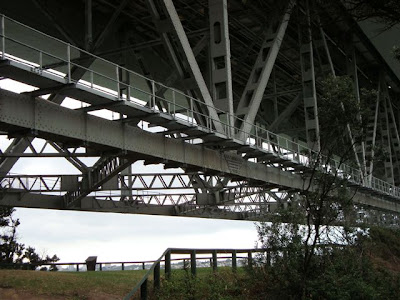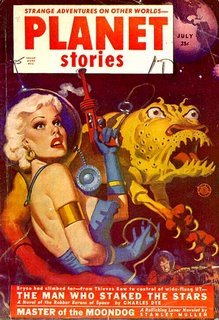It's weird seeing yourself in a foreign language. Last night I was at the booklaunch of Wildes Licht: Poems / Gedichte aus Aotearoa Neuseeland, a bilingual English / German anthology of New Zealand poetry, translated and edited by Dieter Riemenschneider, and available from Tranzlit publishers (or from a bookseller near you).
The title comes from Michele Leggott's poem "Wild Light", and you'll find a really fascinating assortment of poems old and new in there. Why I'm in there is a little harder to say (you'll have to ask Dieter), but I have to say that I certainly value the opportunity to see my words through the transverse lense of his careful translation:
Situations ii: CBD
Auckland nach dem Regen
NO VACANCIES
at the “City of Sails” motel.
It’s hard to convey how strange that is:
dark, skid-marked streets; day after day
of grey …
Who the fuck’s there?
Two loonies
standing by the road
(blue parka, beige kagoul)
not waiting for anything
– just waiting.
By a roundabout.
It’s ten at night.
Rain-slick streets are cool.
has become:
Ortsverhalte ii: CBD
Auckland nach dem Regen
BELEGT
das “City of Sails” Motel.
's ist schwer zu sagen wie merkwürdig das ist:
dunkle Schleuderspurenstraßen; tagelanges
Grau …
Wer verdammt ist da?
Zwei Verrückte
stehen am Straßenrand
(blauer Parka, beiger Anorak)
warten auf nichts
– warten nur.
An einem Verkehrskreisel.
’s ist zehn am Abend.
Die regenglatten Straßen sind kühl.
The title (in the unlikely event you hadn't noticed) makes reference to Max Ernst's apocalyptic "Europe after the Rain" paintings from the 1940s - which seemed very appropriate to me in 1998, when this poem was written, as the whole city was blacked-out and diesel generators were chugging away in every shop door in the CBD.
Beyond that, I particularly like the way that my loonies have become Zwei Verrückte [two crazies], and my "Who the fuck’s there?" has been transformed into the equally-heartfelt: Wer verdammt ist da?
Oh, there are joys innumerable to be found in this anthology. You owe it to yourself to read Allen Curnow's "Das Skelett des Großen Moa in Canterburymuseum, Christchurch":
Nicht ich, ein Kind kommt wunderbar zur Welt
und lernt den Trick, wie man sich aufrecht stellt.
(Pretty clever, getting it to rhyme as well), or Hone Tuwhare's "Keine gewöhnliche Sonne" [No Ordinary Sun], or Apirana Taylor's "Trauriger Witz auf einem Marae" [Sad Joke on a Marae] ...
Why is it so appealing to see these familiar poems in such a new guise? I have to say that I hope this is the first of many such anthologies. There was a bilingual French selection of New Zealand poets included in the journal Europe a few years ago: No 931 (Novembre 2006) – Écrivains de Nouvelle-Zélande, but that doesn't really compare with the epic breadth of Dieter's fascinatingly various sampling of historic and contemporary New Zealand poetry to date.
Anyway, check it out if you get the chance. The initial booklaunch in Auckland will be followed by a road-trip during which Dieter and Jan will launch the book at various venues in Wellington, Christchurch and Dunedin. I'll put up more exact dates and details as soon as they come to hand.
In the meantime, though, I'll leave you with some lines from one of my favourite Curnow poems, "Man wird es wissen wenn man dort ist" [You Will Know When You Get There]:
Hinab geht mann allein, so spät, in den wogenschwarzen Bodenriss.
Down you go alone, so late, into the surge-black fissure.
Isn't that word wogenschwarzen wonderful? "Fissure" still wins out over Bodenriss, though, I think: such a weight of implication in just the sound of those last few words ...






























